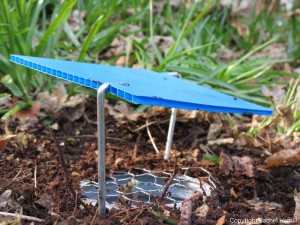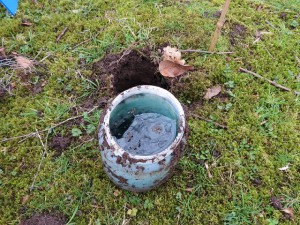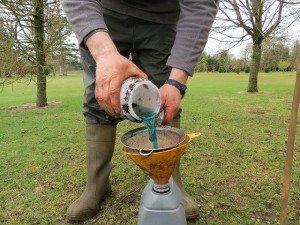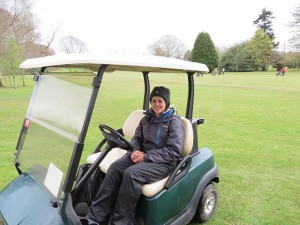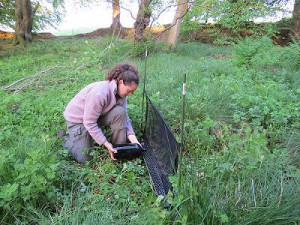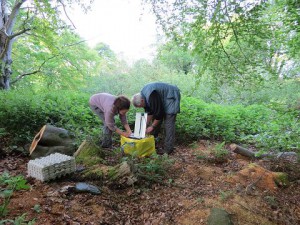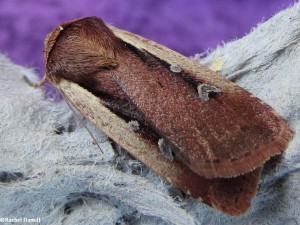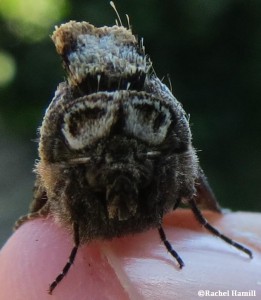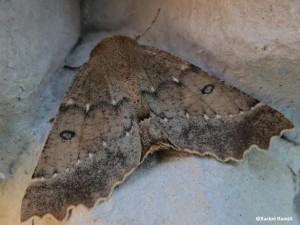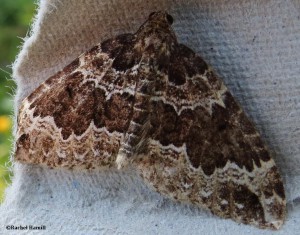
Hi all!
Thought I would give you all an insight into the field work I have been doing these last few months and explain the different trapping techniques I have been using. I set twenty pitfall traps on six of the golf courses at the start of April; they are emptied and reset every two weeks. This is to prevent too much material building up in the traps and perhaps degrading although I am using antifreeze to preserve the specimens but with our climate this can get diluted over the two weeks with direct rainfall or run off from the ground. So it is good practice to empty the traps and reset them with fresh antifreeze it also gives me an insight into what I am catching and it gives me a chance to sort the specimens and start to identify them down to species level.
A jar is buried in the ground with wire mesh placed over the opening to prevent small mammals such as Pigmy Shrews falling in. The blue plastic acts as a rain cover to prevent the jar filling up with water, this is held in place with metal tent pegs.
So far I have been trapping a good mix of species such as Spiders, Ground Beetles, Millipedes and unfortunately a lot of very slimy slugs!! At the start of the season there were not many beetles in the traps but this was due to the cold temperatures slowing everything down but over the last few weeks things have really warmed up and I am seeing a lot more species in the traps.
The photographs below show the steps involved in emptying the Pitfall traps.
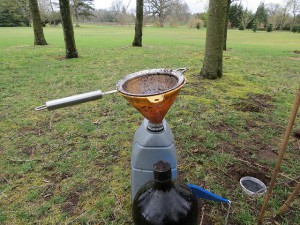
The specimens are then placed into a labelled bag and the waste fluid is stored in the grey container for safe disposal.
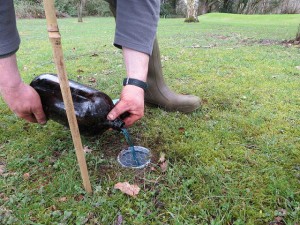
The jar is then placed back into the pit, wire is securely placed over the top and some anti-freeze solution is poured into the trap.
Only a small amount of antifreeze is poured into each trap, after this has been done the rain covers are put back over the traps to prevent them from filling up with rain water. We are spoilt when we go to Moyola Park Golf Course as we get the use of a golf buggy to cruise around the course emptying the traps; this really speeds up our field work and is much appreciated.
As well as the pitfall traps I have set up flight interception traps to catch flying invertebrates. The idea is to pick an area were the invertebrates would be flying through and then when they hit the net they fall into the drain at the bottom which again is filled with antifreeze solution to preserve the specimens for identification. Roy Anderson has been giving me guidance with this technique of trapping, he walked the golf courses with me helping me to select the best area to place the trap and explained why, and he has also been very helpful with species identification. It is great having Roy at hand to help whether it be on the golf course or simply via email, it is very much appreciated.
I have also been moth trapping although this has been hindered somewhat with the weather, last week being an exception of course as it was so warm and calm. I use two different types of traps the mercury vapour and heath trap. The mercury vapour is the best as it can attract a lot more species but the heath traps are good to use in areas where there is no electricity supply. I have been very fortunate to have help and guidance from Ted Rolston and John McClean with the moth trapping and species identification. They have been an excellent help again by accompanying me on the courses trapping and answering my many emails I send them!
That is all for now, if I find any rare or exciting species over the next few months I will let you know.
Rachel

